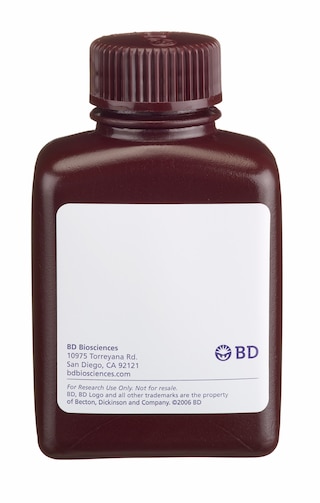-
Reagents
- Flow Cytometry Reagents
-
Western Blotting and Molecular Reagents
- Immunoassay Reagents
-
Single-Cell Multiomics Reagents
- BD® OMICS-Guard Sample Preservation Buffer
- BD® AbSeq Assay
- BD® OMICS-One Immune Profiler Protein Panel
- BD® Single-Cell Multiplexing Kit
- BD Rhapsody™ ATAC-Seq Assays
- BD Rhapsody™ Whole Transcriptome Analysis (WTA) Amplification Kit
- BD Rhapsody™ TCR/BCR Next Multiomic Assays
- BD Rhapsody™ Targeted mRNA Kits
- BD Rhapsody™ Accessory Kits
-
Functional Assays
-
Microscopy and Imaging Reagents
-
Cell Preparation and Separation Reagents
-
- BD® OMICS-Guard Sample Preservation Buffer
- BD® AbSeq Assay
- BD® OMICS-One Immune Profiler Protein Panel
- BD® Single-Cell Multiplexing Kit
- BD Rhapsody™ ATAC-Seq Assays
- BD Rhapsody™ Whole Transcriptome Analysis (WTA) Amplification Kit
- BD Rhapsody™ TCR/BCR Next Multiomic Assays
- BD Rhapsody™ Targeted mRNA Kits
- BD Rhapsody™ Accessory Kits
- United States (English)
-
Change country/language
Old Browser
This page has been recently translated and is available in French now.
Looks like you're visiting us from {countryName}.
Would you like to stay on the current country site or be switched to your country?


.png)

Flow cytometric analysis of HCV Core Protein expression in HCV Genotype 1b-transfected cells. HCV Core Protein Genotype 1b-transfected cells were fixed with BD Cytofix™ Fixation Buffer (Cat. No. 554655) and permeabilized with Perm/Wash Buffer (Cat. No. 554723). The cells were then stained with PE Mouse IgG1, κ Isotype Control (Cat. No. 554680; dotted line histogram) or with PE Mouse Anti-HCV Core Protein antibody (Cat. No. 568707/568708; solid line histogram) at 0.06 ug/test. The fluorescence histogram showing HCV Core Protein expression (or Ig isotype staining) was derived from gated events with the forward and side light-scatter characteristics of intact cells. Flow cytometry and data analysis was performed using a BD LSRFortessa™ X-20 Cell Analyzer System. Data shown on this Technical Data Sheet are not lot specific.
.png)

BD Pharmingen™ PE Mouse Anti-HCV Core Protein
.png)
Regulatory Status Legend
Any use of products other than the permitted use without the express written authorization of Becton, Dickinson and Company is strictly prohibited.
Preparation And Storage
Recommended Assay Procedures
BD® CompBeads can be used as surrogates to assess fluorescence spillover (compensation). When fluorochrome conjugated antibodies are bound to BD® CompBeads, they have spectral properties very similar to cells. However, for some fluorochromes there can be small differences in spectral emissions compared to cells, resulting in spillover values that differ when compared to biological controls. It is strongly recommended that when using a reagent for the first time, users compare the spillover on cell and BD® CompBeads to ensure that BD® CompBeads are appropriate for your specific cellular application.
Product Notices
- Please refer to www.bdbiosciences.com/us/s/resources for technical protocols.
- Caution: Sodium azide yields highly toxic hydrazoic acid under acidic conditions. Dilute azide compounds in running water before discarding to avoid accumulation of potentially explosive deposits in plumbing.
- Since applications vary, each investigator should titrate the reagent to obtain optimal results.
- An isotype control should be used at the same concentration as the antibody of interest.
- For fluorochrome spectra and suitable instrument settings, please refer to our Multicolor Flow Cytometry web page at www.bdbiosciences.com/colors.
- Please refer to http://regdocs.bd.com to access safety data sheets (SDS).
Companion Products





The C7-50 monoclonal antibody specifically recognizes the Hepatitis C Virus (HCV) Genotype 1b Core Protein. This antibody binds to a linear epitope within amino acids 21 to 40 that is highly conserved among all HCV genotypes. HCV is a positive single-stranded RNA virus with a genome of 9,600 nucleotides that encodes a single polyprotein. This polyprotein is post-translationally processed into several structural and non-structural proteins required for viral replication. The HCV core protein is a highly basic RNA-binding protein that surrounds the genome to form the viral nucleocapsid. C7-50 has been used for studying HCV in experimental model systems, including HCV gene-transfected cells.

Development References (6)
-
Heintges T, zu Putlitz J, Wands JR. Characterization and binding of intracellular antibody fragments to the hepatitis C virus core protein.. Biochem Biophys Res Commun. 1999; 263(2):410-8. (Clone-specific: Immunoprecipitation, Northern blot, Western blot). View Reference
-
Kang W, Sung PS, Park SH, et al. Hepatitis C virus attenuates interferon-induced major histocompatibility complex class I expression and decreases CD8+ T cell effector functions.. Gastroenterology. 2014; 146(5):1351-60.e1-4. (Biology). View Reference
-
Kannan RP, Hensley LL, Evers LE, Lemon SM, McGivern DR. Hepatitis C virus infection causes cell cycle arrest at the level of initiation of mitosis.. J Virol. 2011; 85(16):7989-8001. (Clone-specific: Flow cytometry, Immunofluorescence, Western blot). View Reference
-
Kato N. Genome of human hepatitis C virus (HCV): gene organization, sequence diversity, and variation.. Microb Comp Genomics. 2000; 5(3):129-51. (Biology). View Reference
-
Moradpour D, Wakita T, Tokushige K, Carlson RI, Krawczynski K, Wands JR. Characterization of three novel monoclonal antibodies against hepatitis C virus core protein.. J Med Virol. 1996; 48(3):234-41. (Immunogen: ELISA, Immunofluorescence, Radioimmunoassay, Western blot). View Reference
-
Yasui K, Wakita T, Tsukiyama-Kohara K, et al. The native form and maturation process of hepatitis C virus core protein.. J Virol. 1998; 72(7):6048-55. (Clone-specific: Immunofluorescence). View Reference
Please refer to Support Documents for Quality Certificates
Global - Refer to manufacturer's instructions for use and related User Manuals and Technical data sheets before using this products as described
Comparisons, where applicable, are made against older BD Technology, manual methods or are general performance claims. Comparisons are not made against non-BD technologies, unless otherwise noted.
For Research Use Only. Not for use in diagnostic or therapeutic procedures.